Exploring the roots
You can travel back in history, visiting the Ancient town of Sandanski (located in the center of the modern town) which was declared an Archaeological and cultural monument of national importance. You can choose to dive in religion and spend the day at the Rozhen Monastery – the largest Orthodox monastery in the Pirin mountains, then make a tour around the churches of Melnik. Or if you are rather into mysticism and super natural phenomena – visit Rupite or Reverend Stoina Church.
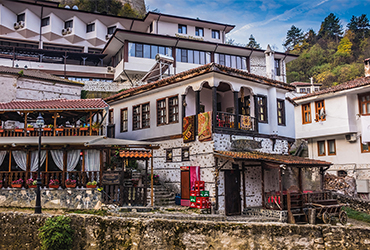
Melnik is located only 5km away from Zornitza Family Estate – the smallest town in Bulgaria, famous for its unique architecture, winding cobblestone streets, and its fruit-soft wine of Broad-Leaved Melnik Vine. The most popular houses are the Kordopulova House, Pashova House, Litova House, Bolyarska House (also the oldest standing house in Bulgaria).
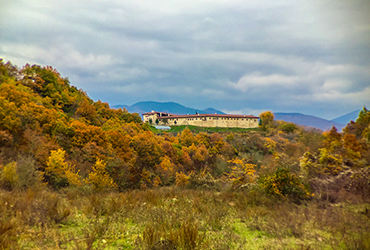
From a cultural and historic perspective, the most notable sight in the Melnik region is the Nativity of the Virgin Mary Monastery in Rozhen. This is the largest orthodox monastery in the Pirin mountains and a century old spiritual center. The icon in the Rozhen Monastery is a replica of the famous wonder-working icon Panagia Portaitissa of the Iveron Monastery on Mount Athos.
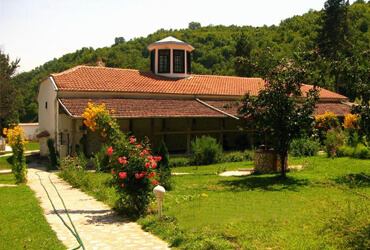
Miracles and metaphysical powers rule over the village of Zlatolist, too, where prophet Reverend Stoyna used to heal and foresee the future, thanks to her patron St. George, after who the monastery in the village is named.
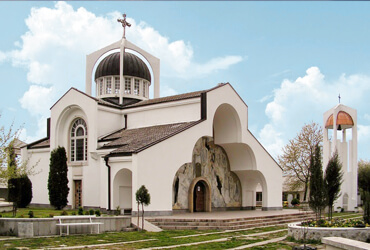
One of the most popular tours will take you to Rupite, where one of the most famous Bulgarians spent her last days – Baba (Grandma) Vanga. The area is a 15-minute drive away from Zornitza Family Estate. The complex around her house, St. Petka Bulgarska Church and the excellently maintained park all present a strong attraction for Bulgarian and foreign tourists.
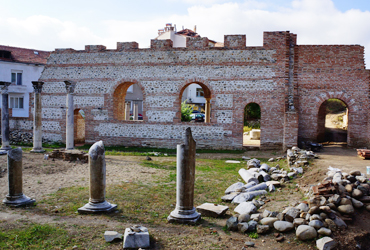
Arrays of arte facts are held in the city of Sandanski, too – in the historical museum and at outdoor sites, in the center of the city. The city is also famous for its mineral water springs, the clean air, the mild climate and its beautiful park – only 15 minutes away from Zornitza Family Estate.
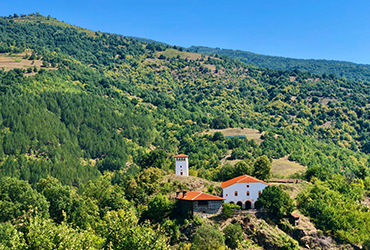
Ograjden is not just another mountain. Driving from Petrich towards the Macedonian border, you’ll have the Belasitsa mountains to your left – covered with a thick cloak of forests, lush and soft, dotted with the occasional small village. Ograjden will be on your right – bleak and rugged, somehow wild and silent. But it still calls to you to discover it, if only a little bit – as much as it will let you.
At the end of summer we decide to visit one of the mountain’s symbols – the Saint George Monastery (Sveti Georgi), also known as Churilovski, Igumenski (Abbot’s), Ograjdenski, and often – Dyavolski (Devil’s). We know from our friends from the village of Borovichene that the monastery is located above the village of Gega, that it only opens its doors for big holidays and the priest who opens it comes from the nearby village riding a mule.
The holy place can be reached by car too, preferably an SUV, or you can park on the main road and walk for about a kilometre. The views are magnificent on all sides, but not a sound is to be heard. The first spring water tap is a few metres before the entrance, the second – a few metres inside, and we discovered two more walking around the courtyard. This place sure is not short of water. And devils – more than you are likely to see in ten churches put together. The entire narthex has been painted with Doomsday scenes, devils are lurking everywhere (hence the name of the monastery).
There are morality pictures about various occupations – the lying miller has a millstone hung around his neck, the shepherd has a sheep, the tailor – if he has been stealing from people’s fabrics, has a huge pair of scissors, etc. hair-raisers. The pictures are done in bright, fairly recently refreshed colours, to lift the effect. The place as a whole looks well maintained and renovated. Besides the church, which is locked up, the courtyard also houses a towering, freshly whitewashed bell tower and a restored building with a veranda and a trellis vine, heavy with grapes, in front of it. With no one to ask, we hit the information boards and websites to try and find out more about the place. Thus we learn that the monastery was originally erected in the 14th century, was demolished during the Ottoman invasion, and then restored in 1858. The permission for that was granted by Sultan Abdul Majid and the firman he issued is still preserved to this day. The monastery also ran a small school for the children from the nearby villages – presumably in the building with the veranda and the vine. The first teacher was Stoyan Gulubov – the locals paid for him to go all the way to Constantinople, to get a quality education and then pass it on to his Bulgarian pupils. We try to figure out how the children managed to make their way here, especially in winter, before we head back. A minute later, there is this dog coming towards us – the first living soul in about an hour. It is followed by a mule carrying saddlebags and an elderly man. Yes, it is indeed grandpa Kiril, whom we had heard about but hadn’t hoped we’d have the chance to meet. We go back with him, of course, he lets us unlock the church – bodes well, he says, and we prepare to listen. Standing before us is an upright man, not looking anything like his 83 years, black trousers with a crease, smart shirt and an immaculately trimmed artistic beard. ‘I’ve been looking after the monastery for 53 years, as well as for the church in the Dolene village (also in Ograjden). When I was younger, I did my rounds on foot or a motorbike, but I’ve been on this mule for quite a while now,’ says grandpa Kiril. He has a grandma too, seven years younger, and two children. Lives in the village of Kukurahtsevo, 3 km from the monastery, which until 1947 was one of the 12 neighbourhoods of the former cluster village of Igumenets. ‘Kukurahtsevo was founded soon after Bulgaria fell under Ottoman rule by two brothers – Palano and Stoyan, fugitives from the town of Kukush, now in Greece. Running from the Turks, the brothers settled in Ograjden and divided the land between themselves – one stayed in the present-day village of Churilovo, the other went to Kukurahtsevo. The monastery is between the two villages.’
We are impressed by the priest’s clarity of thought, rich vocabulary and sharp mind. Turns out this is exactly where he got his education – at the monastery school, where he studied from 1944 till 1947. They used to bring a bag with some bread, another bag with an alphabet book and a notebook, and in winter – a piece of firewood too.
‘Faith seeks learning, and from whence comes freedom – the school came into being 20 years after the monastery opened. There was discipline, respect for the teacher, hunger for knowledge…’
Father Kiril moves to the nearer past and remembers how local artisan painters from Petrich restored the murals in 1979 using special paints. He points to the Turkish mulberry tree in the courtyard, which was especially brought from Asia and is believed to help with various diseases. He tells us about the abundance of holy water at the monastery, brought here in 1966 from a spring some 1000 m away, which had been blessed by the bishop.
I cast a furtive glance at the devil-ridden painted arch, then look back at the silver-tongued father with an air of an angel, and it occurs to me that one always has a choice of which way to look.
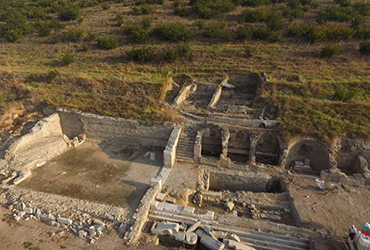
The ancient city of Heraclea Sintica is one of the must-sees in Bulgaria for the lovers of history and archeology.
Heraclea Sintika is an ancient city, the ruins of which were discovered in Rupites area near Petrich. The city was founded in 340 BC. by King Philip II, father of Alexander the Great. It is named after the mythical hero Heracles, and its first settlers were the Thracian Sinti tribe. Excavations of the city began in 2007. Among the most interesting finds is part of a marble statue of the goddess Nike, a shrine of the goddess Nemesis, a Roman gold chain made 16 centuries ago. In July 2023, a votive plaque of a Thracian horseman was discovered, which was recognized as the "Discovery of 2023" at the annual awards of the "Miracles of Bulgaria" campaign. In May 2024, a large-scale project was completed and made the ancient city much more accessible and pleasant to visit.


